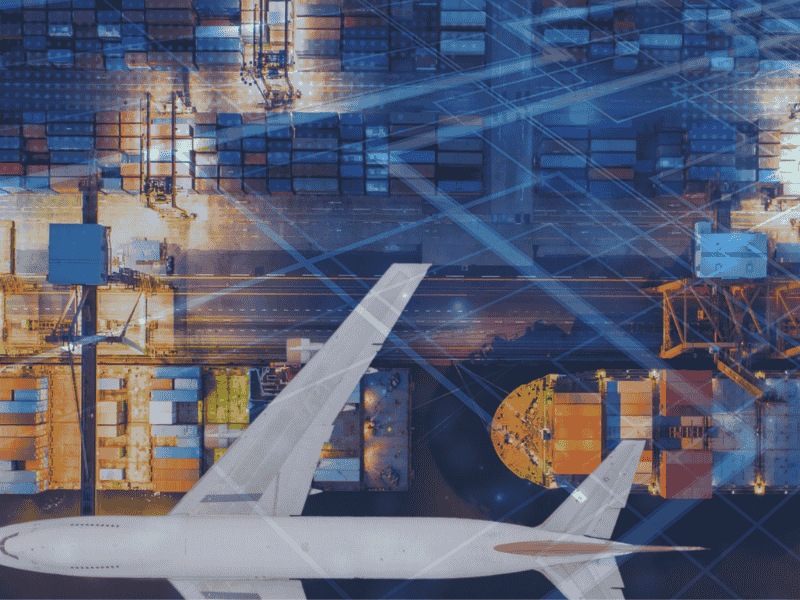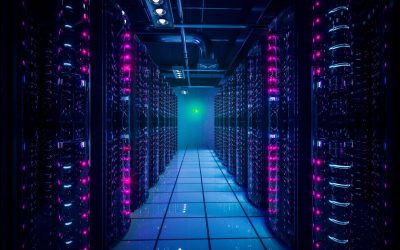Managing components such as GPUs demands surgical precision, technical expertise, and strict adherence to international regulations.
Artificial intelligence is progressing at an exponential pace. Behind this surge lies a complex logistics framework that allows the secure procurement of the graphics processing units (GPUs) required to support its development.
Once limited to gaming and image editing, GPUs have become indispensable for running AI models that process massive volumes of data in parallel. Their architecture, originally designed to manage graphics and millions of pixels simultaneously, is also suited for matrix multiplications and other operations intrinsic to machine learning.
However, transportation, import procedures, and storage of these units require the support of a logistics partner with deep technical expertise, given the equipment’s sensitivity and the regulatory framework governing it.
GPU Imports
Moving GPUs is not comparable to shipping standard hardware. The units arrive in boxes lined with anti-static materials and are protected against impacts, humidity, and sudden temperature shifts. Any misstep in this process can compromise the hardware before it’s even installed.
The mode of transport depends on both urgency and purchase volume. For time-sensitive or smaller shipments, air freight is preferred to reduce lead times. In contrast, large-scale orders are typically shipped by sea, which demands extensive planning and tight port coordination.
One of the most demanding aspects of the process is the legal entry into the destination or transit country. GPUs are subject to customs regulations that vary by location and may include classification as “dual-use” equipment. This designation means that, under certain conditions, they may be used for both civilian and military purposes and require specific authorizations. In such cases, companies must submit additional documentation, such as end-use certificates that verify the intended purpose of the shipment.

When a company decides to import GPUs, servers, or data center infrastructure, it must consider several factors. First, the tariff and regulatory classification. As Carolina Muller, VP of Business Development at Aerodoc, explains: “GPUs are high-value units, subject to dual-use classification and strict regulations. Cross-border shipments carry considerable risk if the documentation is incomplete.”
This means it is not enough to simply pack and ship the equipment; import procedures must be followed, including applicable taxes, required permits, and targeted technical inspections.
End-to-End Service
In addition, transporting highly sensitive hardware requires specialized handling. The logistics process must include proper packaging, temperature control, minimal vibration, and door-to-door delivery to prevent damage that could lead to multimillion-dollar losses.
Providers such as Aerodoc offer:
- Acting as the Importer of Record (IOR), taking full responsibility before customs authorities for the import process.
- Offering a Delivered Duty Paid (DDP) model that covers duties, taxes, customs clearance, and final delivery to the destination.
- Managing specialized warehousing, specifically designed for highly sensitive technology equipment.
For example, for a company importing GPUs into Latin America, the process might unfold as follows:
- The exporting company ships the hardware to the destination country. If required, Aerodoc can also provide Exporter of Record (EOR) services.
- Aerodoc acts as the IOR, preparing and submitting the necessary customs documentation, covering applicable duties, and ensuring the clearance process is compliant and free of delays.
- Once the hardware arrives, it is stored in a suitable facility under controlled conditions and then distributed to the final data center or systems integrator.

All stages—international transport, customs import, storage, and final delivery—are fully coordinated, removing the need for the client to deal with multiple vendors.
Advantages of Working With a Single Provider
For companies dealing with complex hardware such as GPUs, servers, or IT infrastructure, outsourcing transport, import, and storage to a provider like Aerodoc brings several advantages:
- Faster delivery timelines. With pre-positioned inventory in strategic logistics hubs (Aerodoc offers storage in 172 countries) and a logistics partner already familiar with customs procedures, lead times are reduced.
- Cost efficiency. There is no need to build a local operation or manage different vendors in each country.
- Regulatory reliability. The risk of penalties or delays due to errors in documentation, tariff classification, or compliance with tech-related regulations is minimized.
- Higher delivery and service standards. Specialized handling and white-glove delivery guarantee that high-value equipment arrives in optimal condition.
The transport, import, and storage of strategic technology hardware, such as GPUs for AI, require a fully integrated logistics approach. Working with a partner that assumes legal responsibility as the Importer of Record, manages duties and taxes under a DDP model, provides specialized storage, and coordinates every stage of transport helps reduce risk and shortens the time to productive use.
If you’re looking to work with a single provider and ship GPUs anywhere worldwide, contact Aerodoc’s team.
Q&A
- What are the customs requirements for importing GPUs classified as dual-use goods? GPUs may require end-use certificates and special licenses, as they are subject to export controls due to potential military and civilian applications. Partnering with an Importer of Record ensures full regulatory compliance.
- How should companies decide between air and sea freight for international GPU shipments? Air freight suits urgent or low-volume shipments, while sea freight offers cost-efficiency for bulk orders. The decision must factor in delivery timelines, regulatory risks, and the need for environmental controls.
- What specifications should a storage facility meet for high-end GPUs? Facilities must offer temperature and humidity control, anti-static protection, 24/7 monitoring, and vibration mitigation. These features are critical to preserving hardware integrity for AI and data center applications.
- What are the benefits of using a Delivered Duty Paid (DDP) model for GPU importation? The DDP model streamlines logistics by covering taxes, duties, and customs clearance, ensuring frictionless delivery. It reduces administrative burden and accelerates the deployment of mission-critical infrastructure.




